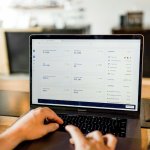How do self assessment payments on account work?
Being experienced year-end accountants, a frequently occurring issue we see with our clients is where they go from paying one self-assessment tax amount in January each year to one in January and one in July – with a huge payment in the first January to kick it all off.
This happens when someone is expected by HMRC to make what’s known as payments on account. This is where instead of paying your whole bill by the end of January, some ten months after the tax year ended, they have to pay three payments instead. One is at the end of January, two months before the end of the tax year. The second is at the end of July, four months after the tax year-end and usually a third payment (known as a balancing payment) in the following January. The balancing payment is the difference between the estimated tax due and the payments on the account made in January and July.

Taxpayers are expected to make payments on account when their tax amount due is over £1,000. So if someone who usually pays around, say £970 every January, has a slight increase in their income and brings their tax bill to £1,010, they will go on to payments on account. This means that for the 20-21 tax year (ending on 5 April 2021), their £970 tax would ordinarily be due by 31 January 2022.
But with a tax amount due of £1,010, being over £1,000 for the first time, they’d have to not only make the usual payment of this amount in January 2022 but also payments on account towards the next tax year. This payment on account is equal to half of the previous year’s tax bill and is intended to estimate what the next year’s tax will be. So the payment in January 2022, in this example, would be 150% of £1,010, or £1,515. Another payment would be due in July 2022 of £505.
This means that the first year going into payments on account will be a shock to the taxpayer’s cash flow as they’re effectively making two years’ payments in the space of one year.
With the above two examples (£970 bill followed by a £1,010 bill), the following year it all tidies up. If the tax bill stays at around £1,010 each year going forward, the payments will be £505 every January and July. Many small businesses we work with like this regime (once the first year is out of the way!) as it reduces the burden on cash in January each year.
It can be a confusing process, but MNE Accounting are here to help – if you need advice on tax, get in touch on 0116 255 2422



